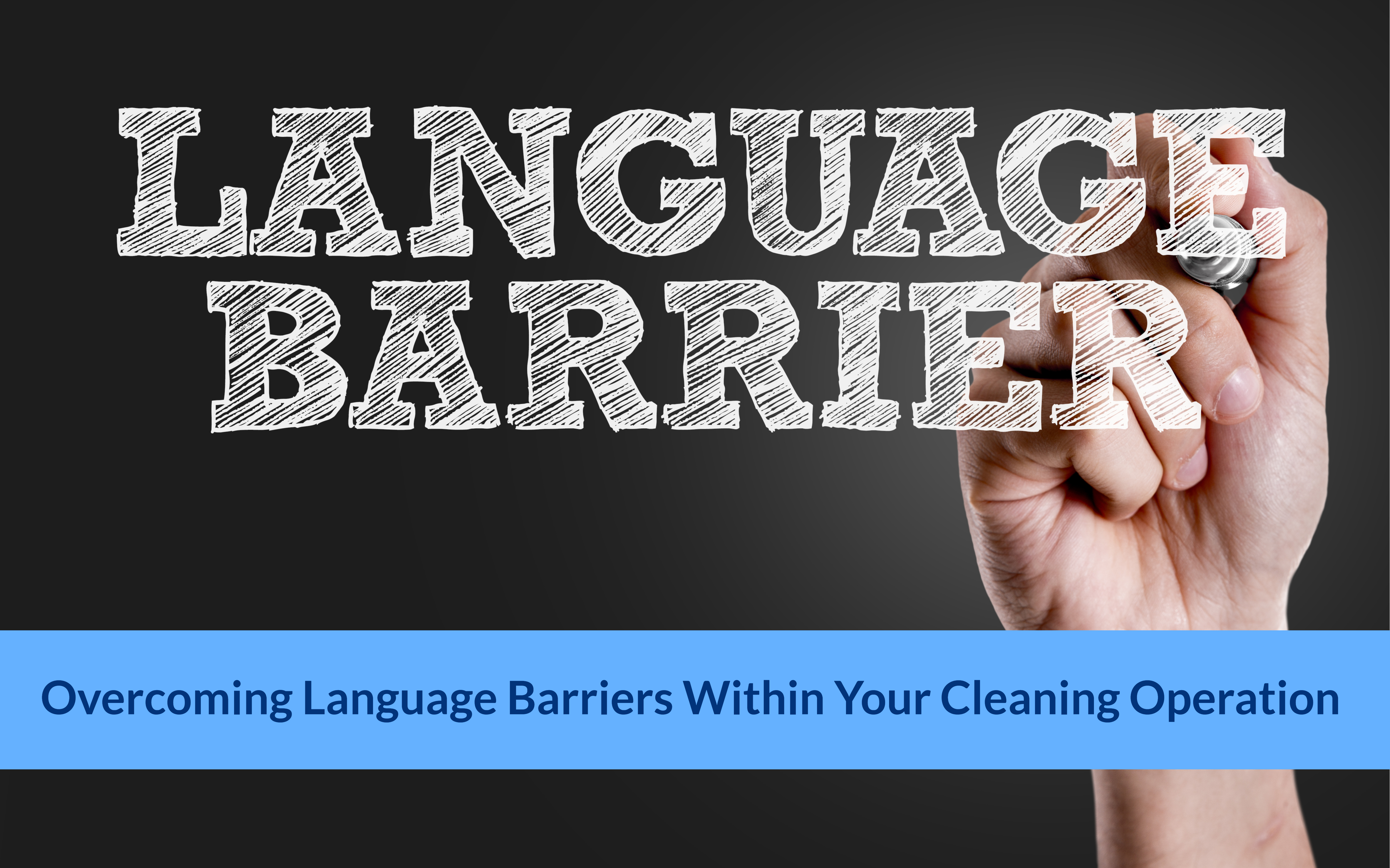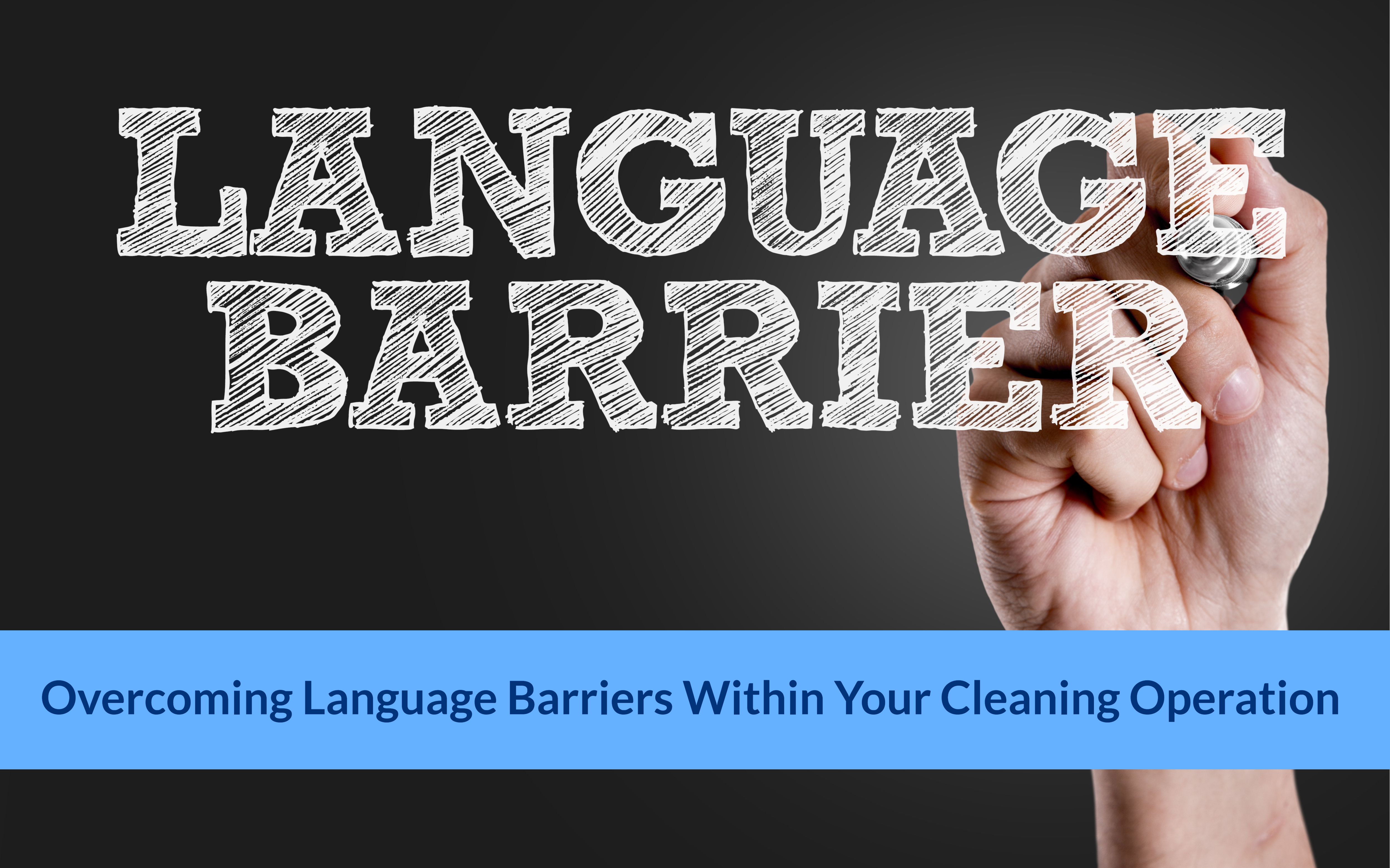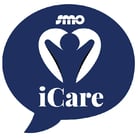

As a cleaning operation you likely have several employees for whom English is not a primary language. Some of those individual may speak enough English to allow for sufficient levels of communication with their English-speaking colleagues and supervisors; however, in most operations, there are those that speak and understand very limited English. That limitation can create confusion, miscommunication, and feelings of isolation for those employees.
This is not a new problem. The Cleaning Service Industry, like many other service industries, has long been faced with the challenge of overcoming language barriers. Over the past couple of decades there have been techniques developed that can help mitigate the language-barrier problem. Those would include...
Visual Aides - Overcoming Language Barriers During Training
The use of visual aides can be a great asset during the new employee training process. Many people retain visual information much easier than information that is presented via the written or spoken word. This is especially true for new employees that are not English speakers. The use of photos, diagrams, and other infographics will provide, and reinforce, the information in a manner that be can be fully absorbed, digested, and retained.
Simplify and Repeat
When communicating with non-English-speaking employees make a point to use language that is as concise and simple as possible. Avoid using "slang" words/phrasing and stick to language that is non-ambiguous. Reinforce critical information through the use of real-time repetition and periodic follow-up.
Be proactive in your approach. Don't assume that your messaging has been understood. Ask questions that will help verify that the employee has fully comprehended the information. When the messaging is task related ask the individual to perform the task to demonstrate their understanding.
Use a Translator
Many companies employ a translator on either a full or part-time basis. A translator can be used to translate English to another desired language during larger meetings, training sessions, etc. A translator can also be used to translate selected documents into other applicable languages. This can help ensure that high-impact information (policies, rules, benefits, job descriptions, etc) is communicated with a high degree of accuracy to those employees that are not fluent in English.
Cultural Education
The adoption of a Cultural Education Program can help in overcoming language barriers. The size and content of such a program would be dependent on the specific needs of your operation. There are many companies that offer Cultural Education Programs in a variety of formats (online, presentations, pamphlets, etc.). The important thing is that you use your program to educate your employees on cultural differences and to establish a framework for communication, teamwork, and understanding.
Language barriers can create significant performance obstacles for a cleaning operation, but, they don't have to. A true commitment to solving the problem, in addition to adoption of a few time-tested techniques, can help ensure that your operation provides clear communication to all of your employees.



.jpg?width=220&height=135&name=Blog%20Listing%20Image%20(13).jpg)
-1.jpg?width=220&height=135&name=Blog%20Listing%20Image%20(5)-1.jpg)

.png?width=180&height=138&name=Untitled%20design%20(25).png)


